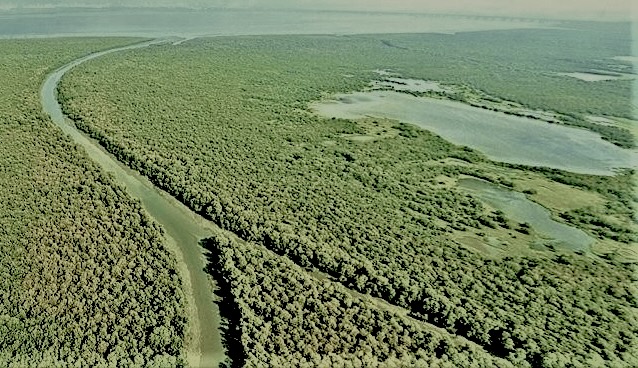The Importance of Mangrove Restoration for India's Coastal Communities
The Importance of Mangrove Restoration for India’s Coastal Communities
India, a nation with a vast coastline stretching over 7,500 kilometers, is blessed with rich marine biodiversity and thriving coastal communities. However, these communities face a growing threat: the degradation and loss of mangrove ecosystems.
Mangroves, unique intertidal forests, play a critical role in protecting coastlines, supporting livelihoods, and maintaining ecological balance. Their restoration is vital for the well-being of India’s coastal communities.
Understanding Mangroves: Nature’s Coastal Guardians
Mangroves are salt-tolerant trees and shrubs that thrive in the intertidal zone between land and sea. Their intricate root systems act as natural barriers, absorbing wave energy and reducing coastal erosion. These “green walls” protect coastal communities from storm surges, tsunamis, and rising sea levels.
Mangroves also act as natural filters, trapping sediments and pollutants from land-based runoff before they reach the ocean. This protects marine ecosystems and maintains the health of coastal waters, vital for fisheries and aquaculture, which are crucial sources of income and food security for coastal communities.
Furthermore, the complex network of mangrove roots provides a nursery ground for a variety of fish, crabs, and shrimp. These juvenile marine life forms find shelter and food within the mangroves, contributing significantly to the overall productivity of coastal fisheries.
The Threats to Mangroves: A Growing Concern
Despite their immense value, mangrove ecosystems in India face several threats:
Coastal Development: Rapid coastal development for industries, tourism infrastructure, and aquaculture has led to the destruction of mangrove forests. Conversion of these vital ecosystems for short-term economic gains undermines their long-term benefits.
Pollution: Industrial waste, agricultural runoff, and untreated sewage pollute coastal waters, harming mangrove health. Pollutants can disrupt the delicate balance of the ecosystem and hinder its ability to provide essential services.
Climate Change: Rising sea levels due to climate change threaten the survival of low-lying mangrove forests. Additionally, changes in rainfall patterns and increased salinity levels can disrupt mangrove growth and regeneration.
Overexploitation: Excessive extraction of firewood, timber, and other resources from mangroves for local use can degrade the ecosystem’s health and reduce its ability to provide benefits to coastal communities.
The Devastating Consequences of Mangrove Loss
The loss of mangroves has severe consequences for India’s coastal communities:
Increased Vulnerability to Disasters: Without the protective barrier of mangroves, coastal communities become more susceptible to storm surges, tsunamis, and rising sea levels. This can lead to loss of life, property damage, and displacement.
Declining Fisheries: Healthy mangrove ecosystems support thriving fisheries. However, mangrove loss leads to a decline in fish stocks, impacting the livelihoods of fishermen and jeopardizing food security for coastal communities.
Loss of Biodiversity: Mangroves are vital habitats for a diverse range of plant and animal species. Their degradation disrupts food chains, reduces biodiversity, and affects the overall ecological balance of coastal ecosystems.
Salinization of Coastal Lands: Mangroves prevent saltwater intrusion into freshwater aquifers. Their loss can lead to salinization of agricultural land, rendering it unsuitable for cultivation and impacting food production.
The Imperative of Mangrove Restoration: A Sustainable Solution
Mangrove restoration offers a sustainable solution to these challenges. It involves planting native mangrove species in degraded areas to revive these vital ecosystems. Restoration efforts not only benefit coastal communities but also contribute to environmental sustainability.
Benefits of Mangrove Restoration
Enhanced Coastal Protection: Restored mangrove forests act as natural barriers, mitigating the impact of cyclones, tsunamis, and storm surges, protecting coastal communities and infrastructure.
Improved Fisheries: Healthy mangrove ecosystems support abundant fish populations, leading to increased fish catches and improved livelihoods for fishermen.
Booming Ecotourism: Restored mangroves can become thriving ecotourism destinations, generating income for local communities while promoting environmental awareness.
Carbon Sequestration: Mangroves are efficient carbon sinks, storing significant amounts of carbon dioxide. Restoration efforts contribute to mitigating climate change.
Examples of Successful Mangrove Restoration in India
Several successful mangrove restoration projects in India showcase the potential benefits:
The Sundarbans Restoration Initiative: This initiative in West Bengal focuses on restoring degraded mangrove areas and promoting sustainable resource management practices amongst local communities.
The Muthuramangalam Community Mangrove Conservation Project: This project in Tamil Nadu involves local communities in planting and protecting mangroves, leading to increased fish stocks and improved livelihoods.
The Odisha Mangrove Management Programme: This large-scale program aims to restore and conserve mangroves along the Odisha coast, protecting coastal villages and promoting sustainable use of resources.
The Importance of Mangrove Restoration for India's Coastal Communities
Challenges and Considerations in Mangrove Restoration
Despite the success stories, mangrove restoration in India faces some challenges that need to be addressed:
Community Engagement: Successful restoration requires active participation from local communities. Raising awareness about the benefits of mangroves and ensuring equitable distribution of benefits from restored ecosystems are crucial for long-term sustainability.
Funding and Resource Allocation: Restoration projects require sustained funding for planting activities, maintenance, and community engagement initiatives. Public-private partnerships and innovative financing mechanisms can help bridge the funding gap.
Scientific Planning and Monitoring: Restoration efforts should be guided by scientific research to ensure the selection of appropriate native species, planting techniques, and long-term monitoring of the restored ecosystem’s health.
Addressing Underlying Causes of Degradation: Restoration efforts will be less effective if the root causes of mangrove loss, such as pollution and unsustainable resource use, are not addressed. Implementing stricter regulations and promoting alternative livelihoods can help tackle these challenges.
Land Tenure Issues: Clarity on land ownership and user rights is essential for successful restoration projects. Collaboration with local communities and government agencies to address land tenure issues can ensure smooth project implementation.
The Road Ahead: A Collaborative Effort for a Sustainable Future
Mangrove restoration is not just a technical exercise; it’s a collaborative effort involving communities, government agencies, NGOs, and the private sector. By working together, India can overcome the challenges and harness the immense potential of mangrove restoration. This will not only protect coastal communities from disasters and ensure their livelihoods but also contribute to a healthier environment and a more sustainable future for all.
- Fur-Ever Friends Boutique: Tail-Wagging Treasures
- Critter Comforts and Beyond: Exploring the Expansive World of Pet Shops
- Paws, Claws, and Beyond: Navigating the Vast Realm of Pet Store Wonders




